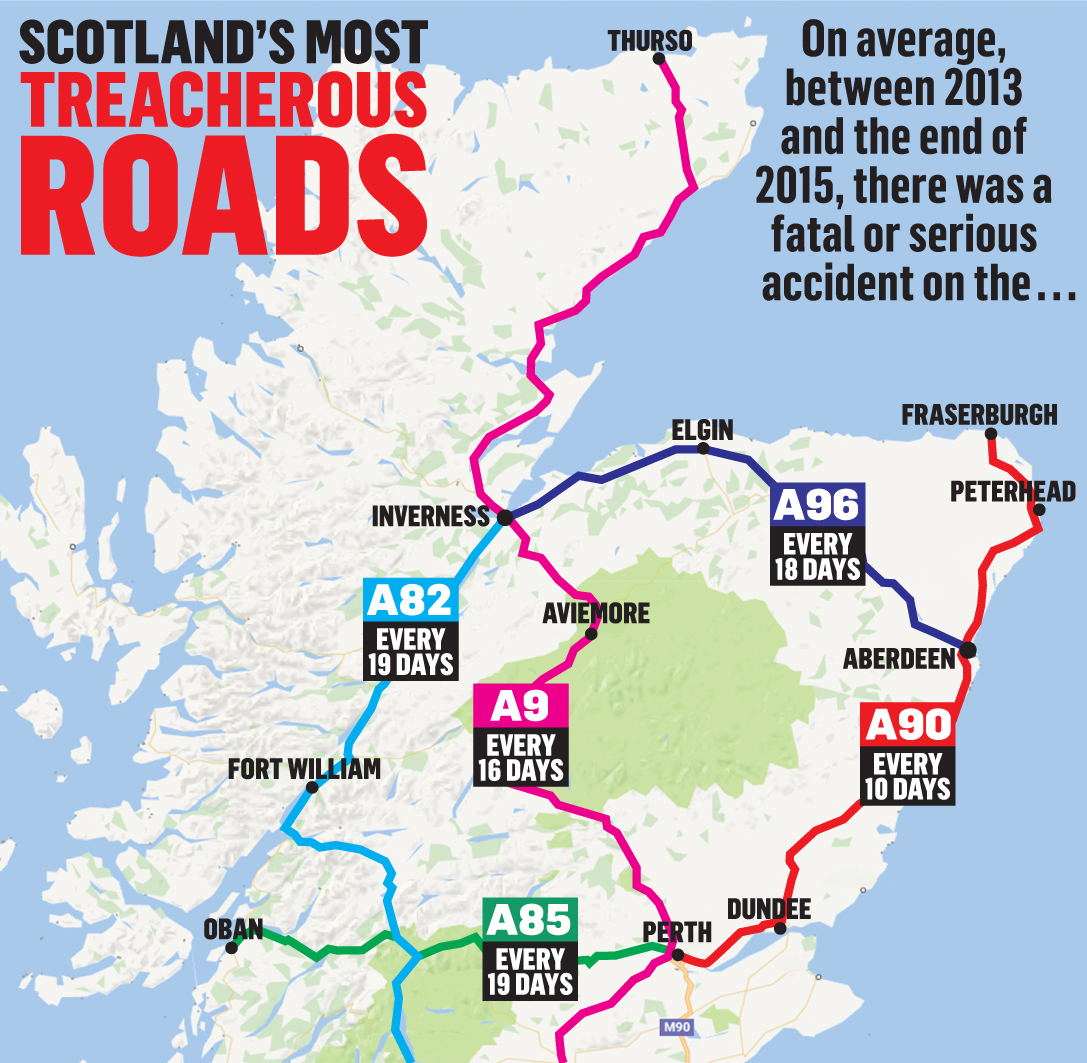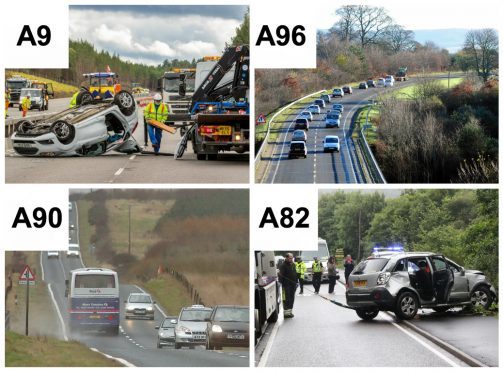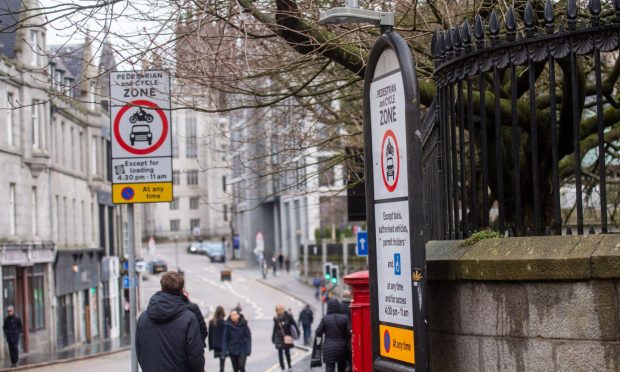Shock new statistics have revealed the north and north-east’s four main roads are the most treacherous in Scotland.
The figures show there have been serious or fatal accidents as frequently as once every 10 days across Grampian and the Highlands in the past two years.
Last night, opposition politicians and road safety campaigners criticised the Scottish Government for failing to make the region’s notorious roads safer.
Scotland’s five worst accident blackspot trunk roads are all in the north and north-east.
The A90 had an average of one serious or fatal accident every 10 days between 2013 and the end of 2015, while the A9 had one every 16 days.
The A96 Aberdeen-Inverness route had on average a major crash every 18 days over the same period.
Both the A82 – which runs from Inverness to Fort William and then on to Glasgow – and the A85 Connel-Perth route – had a serious or fatal accident every 19 days.

Road safety campaign group Brake said the figures made for “very sad reading”, but Transport Scotland said the number of fatalities across the A90, A9, A96, A82 and A85 had reduced by 16% over the last three years.
Efforts are being made to improve safety on the roads, including through dualling – but Scottish Liberal Democrat MSP Mike Rumbles claimed the work was not being done quickly enough.
Plans to build a flyover at the infamous Laurencekirk junction on the A90 – which runs from Dundee to Aberdeen and on to Peterhead and Fraserburgh – were announced earlier this year.
But ministers then admitted the work could take up to 10 years.
MSPs have also criticised the length of time it will take to dual the A9.
Mr Rumbles said: “The fact that the A90 is the most dangerous trunk road in the country reinforces the case for a safe junction at Laurencekirk – a junction which the SNP government has said should be made safe but may take another 10 years for them to take action.
“We need action now from the Scottish Government to save lives.
“Clearly, major infrastructure projects take time.
“But we have already been waiting for years to see improvements to roads like the A96.
“The SNP came into government in 2007 pledging urgent action to improve these trunk roads but next to nothing has happened.”
A spokeswoman for Brake said: “The figures make for very sad reading.
“Each number represents a person who has suffered an appalling, life-changing injury, or a family who will never see a loved one walk through the front door again.
“A-roads are usually busy roads with vehicles travelling at high speeds and the government needs to do whatever it can to reduce the danger that trunk roads pose.”
A spokeswoman for Transport Scotland said “any suggestion fatal casualties are rising is quite simply incorrect”.
She said there had been a 16% reduction in the number of fatalities since 2013, and insisted the government was investing in trunk roads, including the A9 and A96.
She said the controversial A9 average-speed cameras had helped cut road deaths by 30%, while £1.3billion had been spent on Scotland’s roads since 2007.










